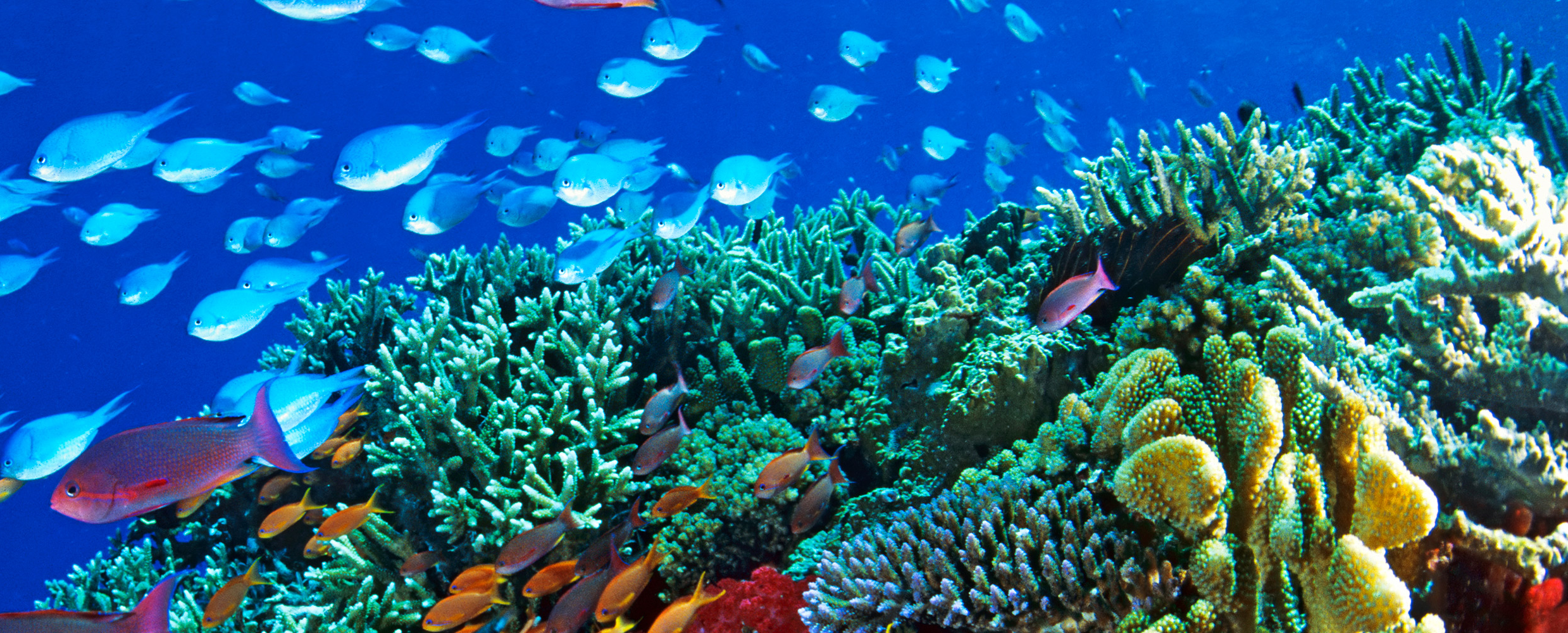Ocean warming is a phenomenon that has been observed and studied in recent decades, and has caused concern around the world due to its environmental impacts. Recent data indicate that ocean warming is increasing at an alarming rate, and that this could have serious consequences for marine ecosystems and human life. This can happen due to a variety of factors, such as the intensification of the greenhouse effect caused by Greenhouse Gas (GHG) emissions from human activity, the absorption of heat from the atmosphere, among others.
The most recent data indicate that the increase in temperatures across the planet can cause irreversible damage to Ecosystems that are extremely relevant for life on Earth. According to a report released by the World Meteorological Organization in 2022, the temperature of the oceans reached the warmest level recorded since the beginning of measurements in marine environments in 1958. This data is important and worrying, considering that the oceans are responsible for absorbing 90% of the excess heat generated by GHG emissions across the planet.
Environmental Impacts of Ocean Warming
Ocean warming is one of the most worrying consequences of climate change caused by human activity. Rising seawater temperatures have devastating effects on the environment, ranging from rising sea levels to ocean acidification.
Climate change caused by ocean warming has significant effects on the global climate, as it means more thermal energy is stored in the upper layers of water, which can lead to an increase in the temperature of the surface of the sea and the air over it. This can cause changes in air circulation and ocean currents, affecting the distribution of rainfall, winds and climate in general. As a result, warming oceans can cause more frequent and intense extreme weather events such as droughts, storms and heat waves.
Ocean acidification is another negative effect of global warming. When seawater absorbs carbon dioxide from the atmosphere, it becomes more acidic. This can affect marine organisms, especially those with calcareous shells or skeletons such as corals and molluscs, which may have difficulty growing and reproducing in a more acidic environment. According to a study published in the scientific journal Nature, global warming has already caused the loss of about 4% in the biomass of marine organisms, including fish, molluscs and crustaceans, compared to pre-industrial levels. Furthermore, the study estimates that if greenhouse gas emissions continue at the current rate, up to 17% of global marine biomass could be lost by the end of the century. Another study, published in the journal Science, found that coral reefs may be at risk of global extinction by 2100 due to rising sea water temperatures and ocean acidification. The study estimates that most of the world's coral reefs could disappear if global temperatures rise by 2 degrees Celsius above pre-industrial levels.
In addition, overfishing, pollution and habitat degradation also contribute to the loss of marine diversity. Warming oceans could exacerbate these problems and further affect marine biodiversity.
Actions Against Global Warming Are Essential To Reverse Ocean Warming
To reverse ocean warming and its negative impacts, urgent and meaningful action is imperative to reduce greenhouse gas emissions and limit global warming. Some important actions include:
– Reduce greenhouse gas emissions: The main cause of global warming is the burning of fossil fuels such as oil, coal and natural gas. It is essential to reduce emissions of these gases, investing in clean energy sources, such as solar and wind energy, and encouraging sustainable practices in all sectors of the economy.
– Preserve and restore marine ecosystems: Marine ecosystems, such as coral reefs and mangroves, play a crucial role in absorbing carbon from the atmosphere and regulating the climate. Protecting and restoring these ecosystems can help mitigate the effects of global warming.
– Adopt sustainable practices in fisheries and aquaculture: Overfishing and unsustainable aquaculture can negatively affect marine biodiversity and the ability of ecosystems to absorb carbon. It is important to adopt sustainable practices in fisheries and aquaculture to reduce these impacts.
– Strengthen governance and international cooperation: mitigating global warming and its effects on the marine environment requires coordinated and collaborative global action. Strengthening governance and international cooperation is critical to meeting this challenge and promoting concrete actions to reduce greenhouse gas emissions and protect the marine environment.
In addition to these actions, it is important that the planetary population also adopt individual measures to reduce their carbon footprint and contribute to the fight against global warming. Some of these measures include:
– Reduce energy consumption: turn off electronic devices and lights when not in use, opt for low energy consumption appliances and use public transport or bicycle instead of car.
– Reduce consumption of animal products: Meat and dairy production is a major source of greenhouse gas emissions. Reducing your consumption of these products can help reduce your carbon footprint.
– Reduce plastic consumption: plastic is a major pollutant in the oceans and contributes to the degradation of the marine environment. Reducing single-use plastic consumption and opting for sustainable alternatives, such as reusable bags and glass containers, can help mitigate these impacts.
The targets of the UN Sustainable Development Goal 14
Recognizing the importance of the oceans and the need to protect them, the United Nations (UN) has set ambitious goals in the Sustainable Development Goals (SDGs), specifically in SDG 14 – Life in Water.
SDG 14 aims to conserve and sustainably use the oceans, seas and marine resources for sustainable development. The targets set out in SDG 14 include:
– Reduce marine pollution: SDG 14 sets targets to reduce marine pollution, including pollution from plastics, nutrients and chemicals.
– Protect marine biodiversity: SDG 14 aims to protect and restore marine ecosystems, including coral reefs and mangroves, and reduce the loss of marine habitats.
– Regulate fisheries and aquaculture: SDG 14 sets targets to regulate fisheries and aquaculture in a sustainable way, to ensure food security and reduce overfishing and unsustainable aquaculture.
– Combat ocean acidification: SDG 14 sets targets to combat ocean acidification, caused by increased emissions of carbon dioxide into the atmosphere.
– Improve management of coastal resources: SDG 14 sets targets to improve management of coastal resources, including management of coastal zones and estuaries.
UN member countries are actively working to achieve the targets set out in SDG 14. One such example is Norway, which is leading the fight against illegal, unreported and unregulated fishing. Norway has worked to strengthen fisheries governance around the world through the development of tracking and certification systems for fisheries products, as well as through participation in international marine conservation agreements. Norway is also a leading funder of marine conservation, investing in projects to protect marine ecosystems around the world. Another example is Australia, which has worked to protect its unique marine ecosystems, including the Great Barrier Reef, the largest coral reef system in the world. Australia has established a number of marine protected areas across the country to protect marine biodiversity and ensure sustainable fisheries. In addition, Australia is investing in scientific research to better understand the effects of ocean warming on marine biodiversity and the steps that can be taken to protect these ecosystems.
Chile is also implementing measures to reduce the impacts of ocean warming on marine biodiversity. The country is working to protect its marine ecosystems through the creation of marine protected areas and sustainable fisheries policies. In addition, Chile is investing in clean technologies, such as solar and wind energy, to reduce greenhouse gas emissions and limit global warming.
Importantly, the fight against ocean warming and its negative impacts requires coordinated and collaborative global action. It is critical to strengthen international governance and cooperation to meet this challenge and promote concrete actions towards marine sustainability, including urgent measures to reduce greenhouse gas emissions and limit global warming, as well as individual measures to reduce the marine footprint. carbon.
Historic UN Agreement signed by over 100 countries in 2023 to protect marine life
In 2023, the United Nations Convention on the Law of the Sea signed a historic agreement to protect biodiversity on the high seas, with the participation of more than 100 countries. The agreement, which entered into force after almost 20 years of discussion, determines that at least 30% of the oceans will be protected areas by 2030 and establishes ground rules for assessing the environmental impact of commercial activities on the oceans, such as fishing and tourism. The areas in question are the high seas, which make up almost half of the Earth's surface, and current threats include climate change, overfishing, ship traffic and mining. Protecting these oceans is critical to the health of the planet, experts say. The agreement was praised for promoting multilateralism and countering destructive trends that affect the health of the oceans.
The 2023 UN agreement is a major initiative aimed at ensuring the protection of biodiversity on the high seas and the sustainability of marine resources. It is critical that countries work together to implement the necessary measures to achieve the goals set out in the agreement, thus ensuring a healthy future for our oceans and for life on our planet.




